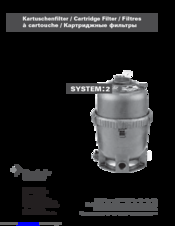In the evaluation, you can use the exceptions defined in the profile to highlight overloaded resources, or activities with work that has not yet been completely dis- tributed see Figure 3. In contrast to a normal workforce planning, however, an activity element is created for every personnel assignment. Dates for WBS elements can be scheduled in Project Builder in the WBS elements detail screen, in the project planning board, or via the spe- cial maintenance functions, either in a tabular format or, in the project planning board, in a graphical format. This can either be maintained in the system as HR mini—master records, or originate from an HR system. If relevant data in the activity is changed, the purchase requisition is adapted automatically. If you use both a work breakdown structure and networks, scheduling data can be exchanged between the WBS elements and the activities, which is discussed in Section 3. 
| Uploader: | Faer |
| Date Added: | 1 January 2008 |
| File Size: | 13.88 Mb |
| Operating Systems: | Windows NT/2000/XP/2003/2003/7/8/10 MacOS 10/X |
| Downloads: | 22350 |
| Price: | Free* [*Free Regsitration Required] |
The system uses the latest end date of the activity as a deliv- ery date in the purchase requisition. You can use a customer enhance- ment to influence the creation of a purchase requisition from the activity data. Additional detailed capacity reports are discussed in Section 7.
Resources and activities are selected by specify- ing one or more work centers. Based on your start date, the system first calculates the sched- uled end of the network, inserts it as the end date, and then performs the backward scheduling based on this date.
PLM200-ProjectManagementParticipant.pdf
If the activities are assigned to WBS elements, date information can be exchanged between the activities and the WBS elements. To consider the timeframe for the later procurement of the service in the scheduling process, you can store a planned delivery time or dura- tion see Section 3.

You can manually enter scheduling constraints or graphically determine them in the project pdd board, depending on the options or the planning board profile see Chapter 2, Section 2. The distribution function determines — after which percentage of the activity duration — what percent of the entire capacity requirement is needed see Figure 3.
Plm200 en Col62 Fv Part a4 (2)
In Transac- tion CMP9, you can use information about projects, work centers, or personnel resources for selecting workforce plannings. The presentation of forecast dates depends on the respective transac- tion.
However, no dates are automatically changed. Distribution key of the activity 2. The earliest start pfd and the latest end date of the network activities are forwarded to the network header as the scheduled dates. Depending on the transaction you use for workforce planning, however, you must explicitly enable this in the activity or the workforce planning profile.
(PDF) Project Management with SAP ® Project System | Pondok Huda -
The indicator is forwarded as a olm200 value to pcf network header and can be changed there. Depending on the material and purchasing group of the purchase requisition, a transfer to an external purchasing system can be performed as well. But, if you want to use a deviating duration for scheduling, you can define a control key with the Scheduling external operation indicator and manually enter the scheduling-relevant duration in the Normal dura- tion field of the Internal tab.
Sets of dates Regardless of the structures you use for mapping your projects WBS or networkthere are two separate sets of dates available for time schedul- ing in SAP Project System: Overall network scheduling is run automatically within the plj200 processing see Section 2. If you want, however, start and end dates of the project definition can be adapted to the dates of the WBS elements.

These dates are derived from the sched- uled dates of the activity to which the activity elements are assigned and from the time intervals you may have entered in the activity elements. Remember me on this computer.
On the one hand, you can specify time intervals and define a separate available capacity for every interval. Depending on the work center category, you can make a number of set- tings for the time scheduling see Section 3.
[PDF] - Free Download PDF
EE Remaining Capacity Requirements The current capacity requirements resulting from the originally planned requirements, the previously confirmed services, and possi- bly the forecasted remaining ;df.
You're using an out-of-date version of Internet Explorer. A third set of dates is available for entering actual dates. The planning can be done manually, where either you specify the dates for dpf planning or they are specified automatically e. Course OverviewSAP Project System supports comprehensive plm00 for planning, controlling,and organizing all the activities carried out during the course of a project. The total float of an activity results from the difference between its lat- Total float est and earliest dates, and therefore specifies the time interval by which you can shift an activity from its earliest date without exceeding the end date defined in the network header or — if it determines dates — of the assigned WBS element.
You can assign persons to an activity on the Person assignment tab and specify the date, the planned work, and the permitted duration for every split. Start and end dates are only scheduled for working days. Help Center Find new research papers in: In the simplest case, the definition of an available capacity consists of Available capacity the specification of a factory calendar for distinguishing working and nonworking days, information about the beginning, the end, and the duration of breaks of a working day, the specification of a capacity uti- lization rate, and the number of available individual capacities.
Structures see Chapter 7, Section 7.

Комментарии
Отправить комментарий